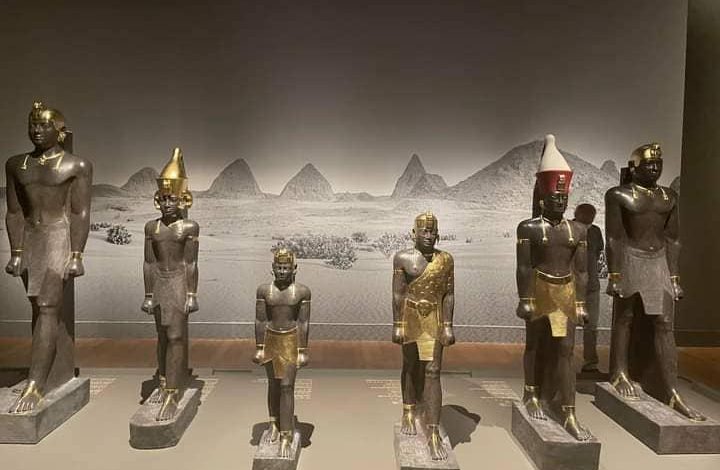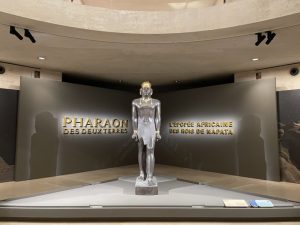African Story of Napata Kings: Exhibition in French Museum

Sudan Events
If you are in Paris or planning to visit the City of Light this summer, the Louvre Museum is allowing its visitors to immerse in of the most amazing chapters of Ancient Black History in Africa. Named Pharaoh Of The Two Lands – The African Story of the Kings of Napata, the exhibition in the famous French museum explores the significant influence of Black Pharaohs from the Kush civilization on Egyptian civilization and history.
Having reigned for nearly half a century, the names of these Black pharaohs, originally from present-day Sudan, are often overshadowed by those of Tutankhamen and Ramses II. However, their epics and conquests have nevertheless contributed to a “Renaissance” of ancient Egypt.
The exhibition is considered one of the most important forums to highlight the Sudanese civilization.

ln the 8th century BC, a kingdom grew up around the Nubian capital, Napata. In about 730 BC, the Nubian king Piankhy conquered Egypt and founded the 25th Dynasty of Kushite kings, who ruled for more than fifty years over a kingdom stretching from the Nile Delta to the confluence of the White and Blue Niles. The most famous of those kings is the pharaoh Taharqa.
The city of Napata was the religious center of the Kush kingdom. In Napata, several temples and monuments dedicated to the Egyptian gods were erected. Even pyramids similar to those of Egypt were also erected to become tubas for their kings.
Besides the opportunity to explore the era of ancient Egypt, which contributed to its continuity and greatness, the exhibition also offers its visitors the possibility to learn the specificities of the art of the Black Pharaohs. The Kushite dynasty left behind its atypical representations of the pharaonic face and personality.
The exhibition at the Louvre, Pharaoh of the two lands: The African story of the Kings of Napata, puts a spotlight on this period, which was prosperous despite a lengthy conflict with the Assyrians.
Many of the exhibited pieces are sourced from the excavations Louvre archaeologists conducted in Sudan over the past decade.
The exhibition doesn’t only focus on Taharqa’s reign. It goes back to the beginnings of the 25th Dynasty, when the armies of King Piye conquered Egypt in the 8th century BC, unifying two vast ancient kingdoms and extending the dominion of the Pharaohs.



